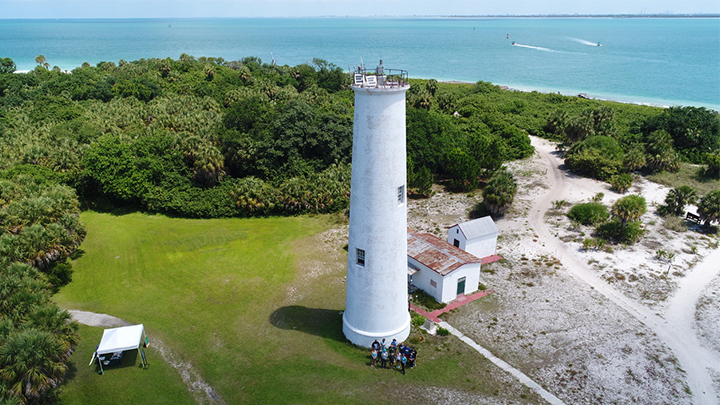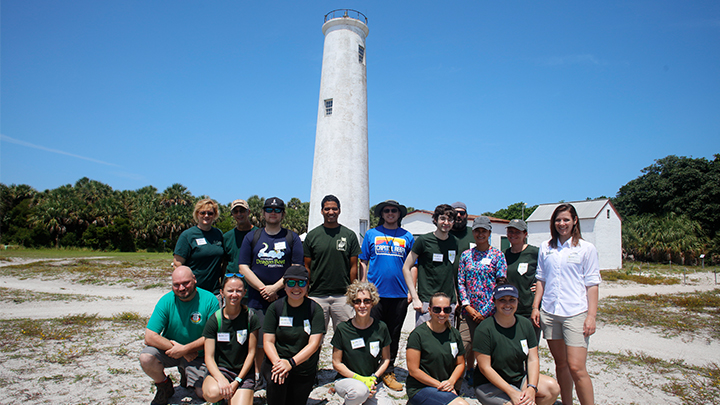Lab Projects
Heritage and Resiliency at Egmont Key

Aerial photo of Egmont Key, showing the historic lighthouse, built in 1858. Credit: Dr. Mel Rodgers.
Few people realize that Egmont Key, now a wildlife refuge of the coast of St. Petersburg, FL, was once an island internment camp where Seminole Indians were imprisoned during the Indian Removal Period, from 1856-1858. Each year, over 200,000 people travel to Egmont Key to enjoy the wildlife refuge and view the remains of military batteries from the Spanish-American War. Signage installed in the 1970s, when Egmont Key became a Florida State Park, focuses on the island’s natural and ecological resources, and does not give voice to the painful Seminole history of the site.

3D point cloud of Battery Charles Mellon, built in 1901. Data collected with Faro Focus laser scanners.
To raise awareness and understanding of this important phase of Egmont Key’s history, the USF College of Arts and Sciences’ new Access 3D Lab is embarking on a digitally-driven heritage research project entitled "Applied Heritage and Sustainability Research at Egmont Key." This creative and interdisciplinary project that brings together groups in innovative ways to address pressing concerns over climate change, coastal erosion, and the preservation of endangered cultural heritage. The project is a a collaboration between the Seminole Tribal Historic Preservation Office, USF Heritage Research Lab, USF Access 3D Lab, and the USF Patel College of Global Sustainability.

Participants in the IDS 6938 Applied Heritage and Sustainability Research course.
This project aims to use 3D virtualization to digitally preserve Egmont Key’s endangered heritage, add to the research on Seminole history during the removal period, and collect archival and ethnohistorical data on Seminole perspectives about the events that took place on Egmont Key in the 19th century. The project explores the story of key Seminole figures such as Polly Parker, who was imprisoned at Egmont Key and later escaped during transit to Oklahoma and made her way back home. In addition, this project is imperative: in 2018, the Florida Trust for Historic Preservation named Egmont Key as the most threatened historic property in the state.
See recent news articles about the Egmont Key project here:
USF Sustainable Tourism team reframes visitor experience to help save Egmont Key
Seminole Tribe, USF Sustainable Tourism and USF Access 3D Lab preserve history at Egmont Key
They can’t turn back waves, but USF and Seminoles are preserving Egmont Key in digital form
USF Course Delves into Egmont Key